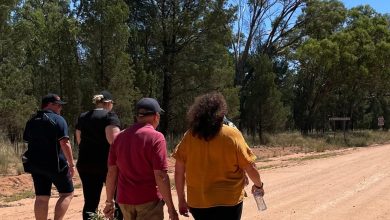
A new report from the Grattan Institute has indicated that in a school classroom of 24 students, eight cannot read well.
Results from last year’s NAPLAN tests identified a similar problem, showing that one in ten students need additional support with literacy. This data, released by the Australian Curriculum, Assessment and Reporting Authority (ACARA), showed that around 10 percent of students nationally are in the ‘needs additional support’ category. Around a third of indigenous students were in this category across all year levels.
Read the latest edition of School News HERE
The report, The Reading Guarantee: How to give every child the best chance of success, estimates that for students in school today who are the most impacted by poor reading performance, the cost to the Australian economy is $40 billion over their lifetimes.
“Australia is failing these children,” said report lead author, and Grattan Institute Education Program Director, Dr Jordana Hunter. “And it’s a preventable tragedy — the reason most of those students can’t read well enough is that we aren’t teaching them well enough.”
Poor reading skills and literacy levels can broadly impact a person’s life. In the short term, students that struggle with reading are more likely to struggle at school, become disengaged and drop out. This can have a knock on effect, impacting a young person’s life more broadly. The World Literacy Foundation (WLF) said that people with below average literacy rates are more likely to experience poorer employment opportunities and outcomes, and lower wages. This can lead to a dependency on welfare, low self-esteem, and higher rates of crime.

It is important to note that a student’s reading performance can be impacted by a range of factors. Educational background, the language or languages spoken at home, and whether English is an additional language can affect a student’s progress in reading. Different learning needs should also be considered, for example dyslexia, vision or hearing impairment or ADHD or ASD which can make concentration more difficult. For many classrooms, then, a one size fits all approach will not work.
A key cause of Australia’s reading problem may be decades of disagreement about how to teach reading.
The Grattan Institute asserts that the ‘whole language’ approach to teaching reading does not work for all students, and that it should not be used in Australian schools. Instead, it advocates for the ‘structured literacy’ approach throughout a students educational journey, which includes a focus on phonics in the early years.
Educational publisher and driving force behind Sunshine Books, Dame Wendy Pye, believes that an explicit, systematic and sequential phonics approach is the best way to teach children to read, write and spell.
“It’s a crucial shift in mindset as schools scramble to lift falling literacy rates, all the while preparing for a new generation of fledgling readers growing up in an artificially intelligent world,” Dame Wendy said. “The latest research has shown how we can elevate the teaching of phonics to achieve far better literacy results.”
“By continuing to look to the evidence provided by the science of reading, and using it to inform teaching practice, we can ensure that all children become successful readers, both now and in the future,” Dame Wendy said.
“Beginner readers need to be explicitly taught the 44 speech sounds of English, known as phonemes, and the letters that represent these sounds, known as graphemes,” Dame Wendy said. “Making texts decodable and supporting them with interactive learning opportunities means we can elevate the teaching of phonics. It’s how we now know children best learn to read.”
The Grattan Institute is calling for all Australian state and territory governments, and Catholic and independent schools sector leaders, to commit to a six-step ‘Reading Guarantee’.
“Australia needs a reading revolution,” Dr Hunter said. “We need to transform the way we teach reading in school, so that every Australian child gets their best chance in life. This report shows how to do it.”







